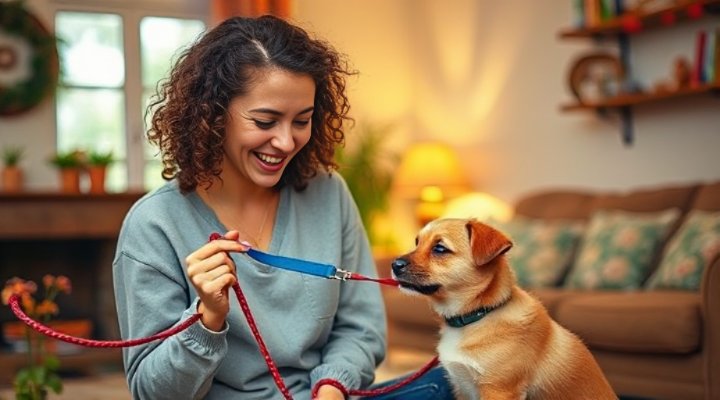Teaching a puppy to walk on a leash is one of the most essential skills for any dog owner. Not only does it ensure safety during walks, but it also strengthens the bond between you and your furry friend. In this guide, we’ll explore easy and effective training tips to make leash walking a pleasant experience for both you and your pup. From choosing the right leash to mastering basic commands, we’ve got you covered!

Why Leash Training is Important
Walking on a leash is more than just a way to control your puppy; it’s a fundamental skill that ensures their safety and well-being. A well-trained puppy is less likely to run into traffic, chase after other animals, or get lost. Moreover, leash training helps establish you as the leader, which is crucial for your puppy’s overall behavior.
For example, my own Labrador, Max, was a handful when we first started leash training. He would pull, jump, and even chew on the leash! But with patience and consistency, he eventually learned to walk calmly by my side. If you’re struggling with a similar situation, don’t worry—this guide will help you navigate the process smoothly.

Choosing the Right Leash and Collar
Before you start teaching your puppy to walk on a leash, it’s important to choose the right equipment. A lightweight, adjustable leash and a comfortable collar or harness are essential. For small breeds, a harness might be a better option to avoid putting pressure on their delicate necks.
If you’re unsure about which leash to pick, check out our article on Best Puppy Leash for Small Breeds. It provides detailed recommendations based on your puppy’s size and temperament.

Step-by-Step Leash Training Guide
Step 1: Introduce the Leash Indoors
Start by letting your puppy get used to the leash indoors. Attach it to their collar or harness and allow them to drag it around under supervision. This helps them associate the leash with positive experiences.
Step 2: Practice Basic Commands
Teaching commands like ‘sit,’ ‘stay,’ and ‘come’ is crucial before you head outside. These commands will give you better control during walks. For more tips on basic obedience, read our guide on Obedience Classes for Puppies.
Step 3: Start Short Walks
Begin with short, 5-10 minute walks in a quiet area. Reward your puppy with treats and praise for walking beside you without pulling. Gradually increase the duration and complexity of the walks as your puppy improves.

Common Challenges and Solutions
Puppies often face challenges like pulling, chewing the leash, or getting distracted. Here’s how to address them:
- Pulling: Stop walking immediately when your puppy pulls. Only resume when the leash is loose.
- Chewing: Redirect their attention with a toy or treat.
- Distractions: Practice in low-distraction environments first, then gradually introduce more stimulating areas.
For more advanced techniques, the American Kennel Club offers excellent resources.

Final Thoughts
Teaching a puppy to walk on a leash requires patience, consistency, and lots of positive reinforcement. Remember, every puppy learns at their own pace, so don’t get discouraged if progress is slow. Celebrate small victories and enjoy the journey of bonding with your furry companion.
For more puppy training tips, explore our 5 Simple Steps to Train Your Puppy to Walk on a Leash.
Related Keywords: puppy leash training, how to train a puppy to walk on a leash, leash training tips, dog walking training, puppy training
